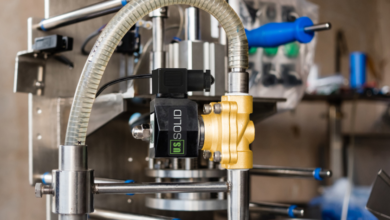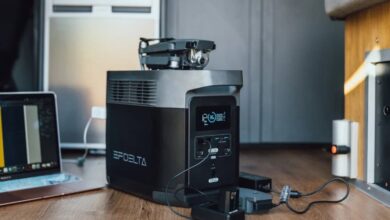The Mindset Behind AIP-DM: People as the Core Drivers of Success in Data Mining

In developing the Agile Iteration Process for Data Mining (AIP-DM), I learned one essential truth: people are at the heart of every successful data mining project. While data, models, and technology are powerful tools, it’s the collaboration, creativity, and insight of team members that ultimately determine a project’s success. The AIP-DM mindset places people at the center, emphasizing that effective data mining hinges on the engagement and synergy of all stakeholders, from data scientists to business analysts. Here’s how I’ve come to view this people-centered approach as fundamental to making AIP-DM effective.
1. Cultivating a Collaborative Culture
In AIP-DM, collaboration isn’t optional; it’s foundational. Every phase—from defining business goals to deploying models—requires input from a variety of stakeholders. I’ve seen firsthand how this collaborative approach transforms projects:
- Building Shared Understanding: Early involvement of all team members creates a unified vision for the project. When everyone understands the goals, potential challenges, and success metrics, it prevents miscommunication and misalignment, allowing the team to focus on delivering results.
- Drawing on Cross-Disciplinary Insights: The power of AIP-DM lies in the diversity of skills each team member brings—data scientists, business analysts, domain experts, IT, and DevOps professionals. Each perspective offers unique value. A domain expert’s insights might shape crucial features in a model, while a DevOps professional could streamline deployment. By leveraging each team member’s strengths, collaboration becomes a competitive advantage.
- Empowering Ownership and Accountability: When people feel that their expertise is valued and their input genuinely impacts the project, they become more invested in its success. I’ve noticed that AIP-DM encourages this kind of ownership, which boosts motivation and accountability within the team.
2. Prioritizing Open Communication and Continuous Feedback
Data mining projects are dynamic. Business needs, data sources, and insights change often, requiring teams to adjust quickly. AIP-DM relies heavily on open communication and continuous feedback to support this flexibility:
- Frequent Check-Ins: In AIP-DM, regular check-ins help keep everyone on the same page. These sessions promote transparency, enabling the team to discuss progress, share insights, and make adjustments in real-time. Open communication ensures that the team can pivot smoothly, keeping the project aligned with evolving objectives.
- Feedback as a Driver of Growth: I don’t see feedback as just a task to complete; it’s essential for refining our approach. Constructive feedback lets data scientists fine-tune models, analysts improve their interpretations, and stakeholders reassess their priorities. This continuous learning loop enables the team to improve and innovate with each iteration.
- Listening to All Perspectives: In AIP-DM, feedback isn’t just top-down; it’s multi-directional. I encourage everyone—leaders, data scientists, and business stakeholders—to share their insights openly. This inclusive approach allows a diversity of perspectives to shape the project, ultimately leading to more comprehensive solutions.
3. Empowering Cross-Functional Teams
I’ve seen the difference that cross-functional collaboration can make in data mining projects. In AIP-DM, success often depends on the collective strengths of a diverse team rather than the contributions of isolated individuals:
- Encouraging Self-Organizing Teams: I believe in giving teams the autonomy to self-organize and make decisions within their expertise areas. This empowerment fosters a sense of responsibility and trust, motivating team members to approach challenges proactively.
- Breaking Down Silos: A cross-functional mindset breaks down barriers between departments, enabling insights and learnings to flow freely across the organization. For instance, data scientists and IT professionals work closely to streamline data pipelines, while business analysts and product owners collaborate to ensure models align with business needs. By promoting this integrated approach, AIP-DM ensures that no one works in a vacuum.
- Problem-Solving as a Collective Effort: Many data mining challenges are too complex for one person to tackle alone. AIP-DM encourages teams to solve problems collectively, allowing for creative solutions that draw on diverse perspectives.
4. Fostering a Growth and Learning Mindset
In data mining, learning is constant. New data, emerging technologies, and shifting priorities require teams to stay adaptable and open to growth. This mindset is essential in AIP-DM:
- Leveraging Iterative Learning Cycles: AIP-DM’s iterative nature provides regular opportunities for reflection and growth. After each cycle, I conduct retrospectives with the team to discuss what worked, what didn’t, and where we can improve. This culture of continuous learning ensures that each iteration builds on previous ones.
- Encouraging Experimentation: Data mining requires a willingness to experiment, knowing that some efforts won’t yield immediate results. In AIP-DM, I reinforce a “fail fast” mentality, where setbacks are seen as valuable learning experiences. By embracing this approach, we create an environment where people feel free to explore and innovate without fear.
- Prioritizing Documentation and Knowledge Sharing: To support learning, I emphasize the importance of documenting our insights and sharing knowledge within the team. This creates a repository of learnings that future teams can build on, promoting continuous growth and improvement.
5. Aligning with Business Goals Through a Shared Vision
Data mining projects often aim for long-term business impact, but the path isn’t always clear. I’ve found that AIP-DM requires a continuous focus on aligning with business goals to stay on course:
- Defining Business-Driven Objectives: In AIP-DM, I work closely with stakeholders to ensure our objectives directly support business goals. This alignment keeps the team focused on creating value that matters to the organization.
- Maintaining Transparency in Purpose: When team members understand the “why” behind their work, they’re more engaged and motivated. I make sure that everyone in the team sees how their contributions relate to the organization’s strategy and impact.
- Evaluating with Business Impact in Mind: AIP-DM encourages evaluating not only the technical success of our models but also their real-world business impact. By measuring our outcomes against business metrics, I ensure that our work delivers tangible value, ultimately driving the company’s growth.
6. Retaining Agility Through an Adaptive Mindset
Agility is more than a process in AIP-DM; it’s a mindset. I encourage teams to embrace flexibility, continuous learning, and openness to change as part of their approach to data mining:
- Focusing on Agility Over Perfection: In AIP-DM, I emphasize progress over perfection. By releasing early versions, gathering feedback, and refining models iteratively, the team can respond quickly to new insights and business needs.
- Embracing Pivot Points: AIP-DM teams have the freedom to pivot when new information arises or when business goals shift. This adaptability allows us to deliver relevant insights that align with real-world conditions, even as they evolve.
- Staying Responsive to New Data and Insights: In data mining, new data and shifting business needs are constants. I emphasize an iterative approach that enables us to continuously incorporate these changes, ensuring that our models remain relevant and valuable.
Conclusion
In creating the AIP-DM framework, I realized that successful data mining projects are built on the foundation of people. By prioritizing collaboration, open communication, cross-functional engagement, a growth mindset, business alignment, and agility, AIP-DM empowers teams to unlock the full potential of data. This people-first approach doesn’t just ensure technical success—it drives meaningful, business-driven results. Ultimately, AIP-DM reminds us that while data and technology are essential, it is the collective efforts, insights, and innovation of our people that truly drive the success of any data-driven project.




